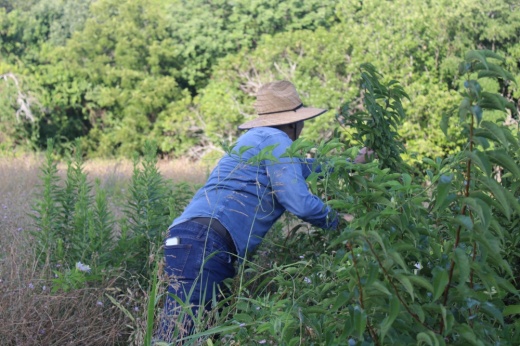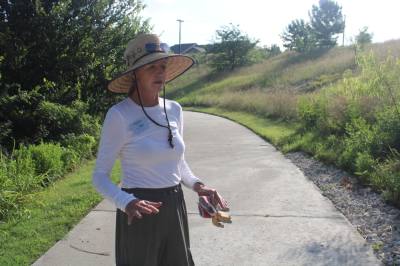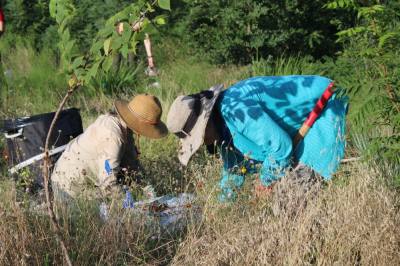The background
Koch became a certified master naturalist in 2021 and soon began leading monthly workdays at Prairie Creek, located behind the Hilton Garden Inn at 101 President George Bush Tollway. The goal, she said, is to remove invasive species that crowd out native plants, allowing the local ecosystem to thrive.
The master naturalist program intends to create “citizen scientists” who share their knowledge and promote the importance of native plants and wildlife.
Classes run from February to May, Koch said, and consist of three-hour classes on Tuesdays.
To maintain certification, master naturalists must complete 40 hours of volunteer work and 14 hours of advanced training annually.
Although funding is not provided from the city, the Parks and Recreation Department often provides trash bags and litter pickers to help clear trash and other debris from the area.
Why it matters
Along with removing invasive plant species and supporting native species, the volunteer group holds annual trash pickups, collecting and casting native seeds to promote growth of desired plants.
Additionally, those visiting the area are encouraged to use the iNaturalist platform to document plants and animals they see. To date, over 700 species have been documented.
Prairie Creek serves as a refuge for wildlife within the urban environment of Richardson and surrounding communities, Sam Kieschnick, urban wildlife biologist with Texas Parks and Wildlife said. Kieschnick, who advises the North Texas Master Naturalist Chapter, said the area supports a large variety of species, including birds, dragonflies, toads, insects and diverse plant life.
“Plant diversity feeds a diversity of bugs, and a diversity of bugs feeds a diversity of birds,” Kieschnick said.
The benefits extend beyond conservation, Kieschnick said, adding that vegetation along the creek helps filter and clean the water through a process called phytoremediation. Plants also clean the air by absorbing carbon dioxide and converting it to oxygen through photosynthesis.
Plants can also help keep urban areas cooler, Kieschnick said, because they absorb heat rather than reflecting it back.
“We need more people to engage, embrace, appreciate and enjoy spots like this,” Kieschnick said.
What you need to know
Koch said the group meets on the third Saturday of every month. No experience or knowledge is necessary and tools are provided.
In addition to Koch, several other master naturalists also help with conversation efforts.







